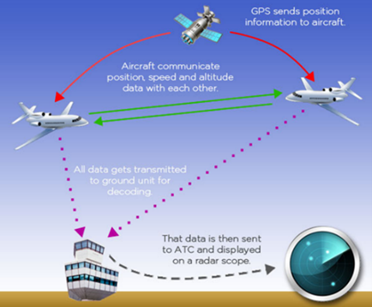

Fokker Services ADS-B Out V2 modification for the A320 family
Overview
Introduction
ADS-B Out is an airspace requirement and already required in many parts of the world. A more stringent version of the ADS-B Out mandate in Europe (SESAR program) since December 2020 and in the USA (NextGen program) since January 2020. The mandates in Europe and the USA require a version 2 (DO-260B) ATC Mode-S Transponder as well as a more capable GNSS Sensor. If you are interested in our ADS-B out modifcation, please complete the our questionnaire via the following link: Fokker Services Group ADS-B out questionnaire (Page 1 of 3)
Your needs
Regulatory documents:
USA (Mandate; January 01, 2020):
FAA: 14 CFR 91.225, 14 CFR 91.227 and AC 20-165B.
Europe (Mandate; December 07, 2020):
EU IR No. 1207/2011, No. 1028/2014, No. 386/2017, No. 587/2020 and CS-ACNS.
China (Mandate; December 31, 2022).
South Africa (2022):
CAA AIC 023/2017.
UAE (Mandate: January 01, 2020)
GCAA UAE AIC 13/2019
Mexico; (Mandate; January 01, 2022):
CO AV-91.2/19.
Your benefits
The introduction of ADS-B has (early) advantages for the airlines as well:
» Surveillance data provided directly from on-board systems.
» Improved safety.
» Increased capacity.
» Preferred routes.
» Shorter routes in areas.
» More efficient flight profiles (in areas where, previously, surveillance was not cost-effective).
» Fuel savings.
» Environmental sustainability (CO² reduction).
» Reduced RF pollution (leading to an increased viability of the 1090 MHz datalink).
» Global Interoperability.
» The use of Space based ADS-B (Tracking).
» Foundation for future SESAR and NextGen ATC applications (spacing, separation, self-separation).
» Future proof for possible upcoming ADS-B IN requirements.
» Less ATC fees.
» Added aircraft value.
Product Description
To become compliant, the following will be needed;
» An EASA / FAA / CAAC / other approved (STC) package (with installation instructions).
» ATC Mode-S Transponders (compliant with DO260B).
» ADS-B Out capable MMR’s or GNSS Receiver(s) with the latest software installed.
» Wiring Interfaces (limited if the aircraft is already Elementary surveillance (ELS) and/or Enhanced Surveillance (EHS) compliant.
» Flight Deck Indications.
» Aircraft Documentation updates.
Your benefits
The introduction of ADS-B has (early) advantages for the airlines as well:
» Surveillance data provided directly from on-board systems.
» Improved safety.
» Increased capacity.
» Preferred routes.
» Shorter routes in areas.
» More efficient flight profiles (in areas where, previously, surveillance was not cost-effective).
» Fuel savings.
» Environmental sustainability (CO² reduction).
» Reduced RF pollution (leading to an increased viability of the 1090 MHz datalink).
» Global Interoperability.
» The use of Space based ADS-B (Tracking).
» Foundation for future SESAR and NextGen ATC applications (spacing, separation, self-separation).
» Future proof for possible upcoming ADS-B IN requirements.
» Less ATC fees.
» Added aircraft value.





